Peer Review Articles by Kenton Card

Antipode: A Radical Journal of Geography, 2023
Care is a practice and form of labour making human survival and flourishing possible. This Sympos... more Care is a practice and form of labour making human survival and flourishing possible. This Symposium explores the place and work of care within housing movements, asking how care operates as a politics, an ethics, and a set of practices through which tenants survive-and ultimately seek to transform-the structural violence of capitalist housing systems. Situated in US cities with abiding associations with Blackness and indigeneity, papers in the Symposium examine housing movements that take care as the starting point. As we discuss in this introduction to the Symposium, in such movements, care operates as connective tissue across households and modes of difference; challenges relations of racial capitalism and settler colonialism that underlie dominant understandings of who deserves and can demand care; and drives calls for public care and experiments with non-propertised forms of ownership. Housing systems are care infrastructures, making housing movements a vital place for care work.

Housing Studies, 2022
How can tenants affect housing policy? This paper compares rental housing politics in Los Angeles... more How can tenants affect housing policy? This paper compares rental housing politics in Los Angeles (USA) and Berlin (Germany) between 2008-2020 by examining how political processes influenced policy. It serves as a case of the emergence, escalation, and impact of tenant power. Tenant movement organizations employed five mechanisms to affect policymaking: (1) making demands, (2) forming coalitions, (3) promoting referendums, (4) engaging government officials in dialogue, and (5) transferring agents to government. The paper draws on multiple data sources, including interviews and participant observation over ten years. The cities witnessed policy episodes with four parallel characteristics: (1) locally progressive and regionally moderate, (2) shifting from defensive to offensive, (3) shifting from particular to universal, and (4) signs of a breakthrough beyond neoliberal housing policymaking. The findings suggest that the rise of tenant movements and their allies help drive policy change via multiple channels, exhibiting both similarities and differences across cities, especially in terms of money power and people power.
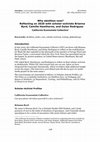
Interface: a journal for and about social movements, 2021
In late 2020, the California Economists Collective (CEC) sat down with Brianna Byrd, Camilla Hawt... more In late 2020, the California Economists Collective (CEC) sat down with Brianna Byrd, Camilla Hawthorne, and Dylan Rodriguez to reflect on the mobilizations for Black life that exploded in the aftermath of the murders of George Floyd and Breonna Taylor, a movement which the New York Times has speculated may be the largest, by protest numbers, in United States history (Buchanan, Bui and Patel, 2020).
CEC asked Byrd, Hawthorne, and Rodriguez to reflect on their scholar-activism as abolitionists. While CEC interviewed each one-on-one, below we have integrated the transcripts thematically, which we believe adds additional insight across the topics. (The interviews were filmed and will also be part of a multimedia project by the same name.)
The conversations are structured as follows: (1) Scholar-Activist Profiles, (2)
The Police as a Capitalist Institution, (3) Abolition Now, (4) Pedagogy and
Spaces of Abolition, (5) Reparations, ‘Looting,’ and Philanthropy, and (6) What
Is (Next) to be Done?

Taylor & Francis, Apr 29, 2011
Architects are reemphasizing their social mission and creating new forms of ‘social architecture,... more Architects are reemphasizing their social mission and creating new forms of ‘social architecture,’ which has elsewhere been categorized as ‘activist,’ ‘humanitarian,’ ‘progressive,’ and ‘public interest.’ This present form of social architecture has roots in 1960s experimentation and has been a reaction to professionalization of the discipline and to stylistic postmodernism. It has paralleled environmental consciousness, and has become more relevant with rising inequality due to the global recession and continuing economic instability. The magnitude of social architecture’s development is impressive. A ‘social architectural’ program has been voted by the Deans of Architecture schools as the best education model in the US[1] and the work of socially engaged architects has been exhibited at MoMA in New York.[2] ‘Social architects receive national awards, teach studios in the Ivy League, and organize conferences to spread influence beyond their disciplinary boundaries.
As new practices develop, controversies have surfaced regarding the architect’s ambiguous relationship to yielding disciplinary power. This paper will present (1) critical perspectives on social architecture, (2) ethnographic snapshots from the field, (3) a geopolitical perspective, and (4) a projectile where the ‘social’ is more radically localized alongside social movements like the Right to the City.
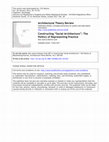
In the context of ongoing economic and environmental crises, “social architecture” has gained tra... more In the context of ongoing economic and environmental crises, “social architecture” has gained traction as a description of those practices that seek to challenge the dominant professional model of capital-intensive, client-dependent architectural production. Approaching “social architecture” as a representation that contains crucial assumptions both about mainstream architectural practice and disparate strategies for its rejection, this paper draws on recent critical social science literature to analyse fieldwork with the Rural Studio, a design-build program in Alabama, USA. Exploring different understandings of “social architecture”—including as expressed by students, teachers, clients and community members—we suggest that the category is, in practice contexts, replete with tensions, rejections and uncertainties; coherence of intention or outcome can certainly not be assumed when architects attempt to deal with contradictions and crises emerging from other parts of capitalist society.
Book Chapters by Kenton Card

Commoning the City Empirical Perspectives on Urban Ecology, Economics and Ethics, Routledge, (Ed) Derya Özkan, Güldem Baykal Büyüksaraç, 2020
Distinct socioeconomic groups have mobilized alternative housing models in Berlin over the past t... more Distinct socioeconomic groups have mobilized alternative housing models in Berlin over the past two decades to confront the widespread housing shortage following neoliberal urban restructuring since 1989. This paper presents ethnographic snapshots of two models-Building Groups and Mietshäuser Syndikat-to analyze how the forms of coproduction, comaintenance, and semi-open spaces are at times forms of actually existing housing commons. While both models contain forms of commoning, they diverge in property regimes. Building Groups utilize private property and residents may thus sell their units and individually profit on the collective labor input. Mietshäuser Syndikat employs a form of dual ownership that collectivizes control so that the living and shared spaces will remain permanently affordable for members of the housing syndicate. The paper considers the contradictions, limitations, and implications of the two models, such as their producing islands of housing security for inhabitants, rather than pressuring the state to subsidize larger scale projects.
Urban studies inside-out: theory, method, practice. Sage., 2019
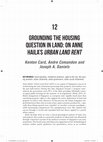
Urban Studies Inside/Out: Theory, Method, Practice. Sage., 2019
KEYWORDS: financialization, neoliberal urbanism, right to the city, the housing question, urban c... more KEYWORDS: financialization, neoliberal urbanism, right to the city, the housing question, urban citizenship, urban governance, urban social movements
Anne Haila's Urban Land Rent (2015) is an exposé of Singapore's success in transforming the state institutions governing land, property, and markets over the past half-century. During this time, Singapore became a 'property state', wherein the government owns 90% of the land, providing 'affordable owner-occupied public housing for the majority of its population' (Haila, 2015: 4). Haila's designation of Singapore as a 'property state' signifies much more than sanctifying property rights; it also suggests the active deployment of land and property to achieve state objectives. In that process, she claims, Singapore out-performed most other cities in terms of per capita economic productivity-especially those fitting squarely into 'capitalist' or 'socialist' economic paradigms-while maintaining comparatively low unemployment rates. She explains this success through a revised and expanded land rent theory applied to a purely urban context.
Edited Volumes by Kenton Card
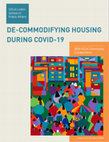
by Kenton Card, Elise Boretz, Sara Beth Harrell, Abou Ibrahim-Biangoro, Gabriel Lozano, Michelle Rolon, Rosa Coronado, Marco A. Covarrubias, Leslie Ezeh, Winnie Fong, Roberto Garcia-Ceballos, Laura Gracia-Santiago, Frances Huynh, Zerita Jones, and Fanny Ortiz UCLA Community Collaborative, 2020
INTRODUCTION
The 2020 UCLA Community Collaborative is an applied research proje ct that operated ... more INTRODUCTION
The 2020 UCLA Community Collaborative is an applied research proje ct that operated through the UCLA Luskin School of Public Affairs from January to June 2020. The project brought graduate students in Urban Planning and Public Health together with community partners from South and East Los Angeles to address the question: How can LA’s working-class communities of color disrupt the devastating impact of speculative capital that is raising housing costs, creating displacement, and destabilizing neighborhoods? The project evolved to also address the emergent crisis of COVID-19, the stay-at-home orders, and the impact of the pursuant economic crisis on Los Angeles area housing. This course gave students and local practitioners the opportunity to learn together, conduct research, and develop a final project serving community organizers and policymakers.
PROJECT RATIONALE
Globally, there has been a shift toward land and housing serving as an investment tool rather than satisfying the basic human need for shelter. Residential real estate now
constitutes 42% of global wealth. In Los Angeles, there are major racial and ethnic wealth disparities, with Latino and Black households having about 1 cent for every dollar of Whites’ wealth. Renters – who make up 63% of all Angeleno households – have not fared well as their homes have been commodified, and they have almost no opportunity or leverage to intervene in the real estate market to protect their families’ interests or to keep their communities whole.
Low-income neighborhoods of color such as those in South and East Los Angeles are disproportionately vulnerable to regional economic changes in the city. Considering the current public health crisis and the economic crisis projected to follow, low-income neighborhoods of color will face growing impacts of speculation and displacement by financial actors with greater, more immediate access to capital. This document represents comprehensive research addressing housing speculation, the intersection between housing speculation and public health, and possible
policy responses to promote housing justice and equity.
Contents Include:
1. Special Issue on Resistance to Extraction
2. Tribute to Jacqueline Leavitt ... more Contents Include:
1. Special Issue on Resistance to Extraction
2. Tribute to Jacqueline Leavitt and Edward W. Soja
3. Additional Contributions
Additional Publications by Kenton Card
Shelterforce, 2023
Reaction to the housing crisis in California has led to a series of gains for tenants, including ... more Reaction to the housing crisis in California has led to a series of gains for tenants, including a new Renters’ Caucus.
Jacobin Magazine, 2019
The right to housing should be part of the Green New Deal. And Bernie should help push it forward.

Critical Planning Journal, 2017
For nearly a quarter century, Critical Planning Journal (CPJ) has been a venue where UCLA urban p... more For nearly a quarter century, Critical Planning Journal (CPJ) has been a venue where UCLA urban planning students and allies ask some of the most pressing questions of the time. After the election of Donald Trump (Number 45), the hashtag #Resist quickly spread. In many ways, Number 45 typifies the perfect villain of ongoing neoliberal restructuring and global political shifts right. Naomi Klein (2017) explains how Number 45 fuses a new style of hyper-capitalism beyond product branding into multiple domains of life, including real estate, clothing, television shows, and so on, as sites of accumulation for trillions of worldwide surplus capital. Number 45 also stokes the fires of racism, taking advantage of middle class economic hardship, while insisting the solution lies in the Mexico border wall, the Muslim travel ban, and tax cuts for the rich. Yet, vilifying Number 45 is not enough.

Multi-ethnic and immigrant resistance play a pivotal role in challenging the political shifts rig... more Multi-ethnic and immigrant resistance play a pivotal role in challenging the political shifts right, which have been rooted in racism, xenophobia, and social, political, and economic isolationism. Housing movements serve as a central site of struggle, and propel the notion that housing ought to be treated as a fundamental human right. This paper begins by introducing the explosion of housing rental prices in Los Angeles and Berlin. It then surveys two explicitly anti-racist tenant movements, the Los Angeles Tenants Union and Kotti & Co, and how in a political era where news headlines are dominated by new forms of nationalist politics—the rise of the alt-right and Donald Trump in the United States and Alternative für Deutschland in Germany—communities are resisting exclusive politics and inventing new forms of radical inclusion and community empowerment. Finally, the paper highlights the major milestones of the tenant movements and questions their strategies of social change.
Below are excerpts from a conversation with Pete White, the founder and executive director of th... more Below are excerpts from a conversation with Pete White, the founder and executive director of the Los Angeles Community Action Network (LA CAN). Kenton Card conducted the interview at LA CAN in Skid Row.

The world is haunted by crisis and architects are responding with various “conscious” practices. ... more The world is haunted by crisis and architects are responding with various “conscious” practices. The testing of ideas is invaluable, however we must also unpack the interconnections between crisis, space, and new architectural practices.
This paper will traverse the global economic crisis and revolts, the commodification fetish of architecture, observe a “conscious” architectural practice, and suggest architects follow the new political imagination with a new architectural imagination. The dominant practice of architecture that people aspire to practice and that has engulfed architecture pedagogy in the United States and elsewhere is a fetish for “conscious” architectural objects disguised by progressive rhetoric: sustainable, political, social, public interest, acupuncture, smart, for the other 90%, etc. The practices of architectural consciousness are a fetish (and have a “talisman complex”) that assumes they can produce a predetermined societal impact from an aesthetic, innovative or technological nature of the architectural object.
The City and the Political Papers, Jun 2012
The title of the class—The City and the Political—was coined over a cup of coffee with the vision... more The title of the class—The City and the Political—was coined over a cup of coffee with the vision to explore the gap between thought and action: embodied here by the philosopher and the architect. The gap between the “city” and the “political” is a blind spot, which makes any integrative genealogy controversial and presumptuous, if not rash. We sought to create a space and community to debate this distance at The Public School, Berlin. ...


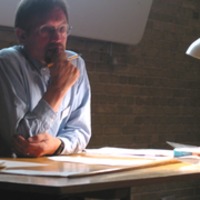

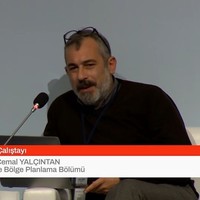






Uploads
Peer Review Articles by Kenton Card
CEC asked Byrd, Hawthorne, and Rodriguez to reflect on their scholar-activism as abolitionists. While CEC interviewed each one-on-one, below we have integrated the transcripts thematically, which we believe adds additional insight across the topics. (The interviews were filmed and will also be part of a multimedia project by the same name.)
The conversations are structured as follows: (1) Scholar-Activist Profiles, (2)
The Police as a Capitalist Institution, (3) Abolition Now, (4) Pedagogy and
Spaces of Abolition, (5) Reparations, ‘Looting,’ and Philanthropy, and (6) What
Is (Next) to be Done?
As new practices develop, controversies have surfaced regarding the architect’s ambiguous relationship to yielding disciplinary power. This paper will present (1) critical perspectives on social architecture, (2) ethnographic snapshots from the field, (3) a geopolitical perspective, and (4) a projectile where the ‘social’ is more radically localized alongside social movements like the Right to the City.
Book Chapters by Kenton Card
Anne Haila's Urban Land Rent (2015) is an exposé of Singapore's success in transforming the state institutions governing land, property, and markets over the past half-century. During this time, Singapore became a 'property state', wherein the government owns 90% of the land, providing 'affordable owner-occupied public housing for the majority of its population' (Haila, 2015: 4). Haila's designation of Singapore as a 'property state' signifies much more than sanctifying property rights; it also suggests the active deployment of land and property to achieve state objectives. In that process, she claims, Singapore out-performed most other cities in terms of per capita economic productivity-especially those fitting squarely into 'capitalist' or 'socialist' economic paradigms-while maintaining comparatively low unemployment rates. She explains this success through a revised and expanded land rent theory applied to a purely urban context.
Edited Volumes by Kenton Card
The 2020 UCLA Community Collaborative is an applied research proje ct that operated through the UCLA Luskin School of Public Affairs from January to June 2020. The project brought graduate students in Urban Planning and Public Health together with community partners from South and East Los Angeles to address the question: How can LA’s working-class communities of color disrupt the devastating impact of speculative capital that is raising housing costs, creating displacement, and destabilizing neighborhoods? The project evolved to also address the emergent crisis of COVID-19, the stay-at-home orders, and the impact of the pursuant economic crisis on Los Angeles area housing. This course gave students and local practitioners the opportunity to learn together, conduct research, and develop a final project serving community organizers and policymakers.
PROJECT RATIONALE
Globally, there has been a shift toward land and housing serving as an investment tool rather than satisfying the basic human need for shelter. Residential real estate now
constitutes 42% of global wealth. In Los Angeles, there are major racial and ethnic wealth disparities, with Latino and Black households having about 1 cent for every dollar of Whites’ wealth. Renters – who make up 63% of all Angeleno households – have not fared well as their homes have been commodified, and they have almost no opportunity or leverage to intervene in the real estate market to protect their families’ interests or to keep their communities whole.
Low-income neighborhoods of color such as those in South and East Los Angeles are disproportionately vulnerable to regional economic changes in the city. Considering the current public health crisis and the economic crisis projected to follow, low-income neighborhoods of color will face growing impacts of speculation and displacement by financial actors with greater, more immediate access to capital. This document represents comprehensive research addressing housing speculation, the intersection between housing speculation and public health, and possible
policy responses to promote housing justice and equity.
1. Special Issue on Resistance to Extraction
2. Tribute to Jacqueline Leavitt and Edward W. Soja
3. Additional Contributions
Additional Publications by Kenton Card
This paper will traverse the global economic crisis and revolts, the commodification fetish of architecture, observe a “conscious” architectural practice, and suggest architects follow the new political imagination with a new architectural imagination. The dominant practice of architecture that people aspire to practice and that has engulfed architecture pedagogy in the United States and elsewhere is a fetish for “conscious” architectural objects disguised by progressive rhetoric: sustainable, political, social, public interest, acupuncture, smart, for the other 90%, etc. The practices of architectural consciousness are a fetish (and have a “talisman complex”) that assumes they can produce a predetermined societal impact from an aesthetic, innovative or technological nature of the architectural object.
CEC asked Byrd, Hawthorne, and Rodriguez to reflect on their scholar-activism as abolitionists. While CEC interviewed each one-on-one, below we have integrated the transcripts thematically, which we believe adds additional insight across the topics. (The interviews were filmed and will also be part of a multimedia project by the same name.)
The conversations are structured as follows: (1) Scholar-Activist Profiles, (2)
The Police as a Capitalist Institution, (3) Abolition Now, (4) Pedagogy and
Spaces of Abolition, (5) Reparations, ‘Looting,’ and Philanthropy, and (6) What
Is (Next) to be Done?
As new practices develop, controversies have surfaced regarding the architect’s ambiguous relationship to yielding disciplinary power. This paper will present (1) critical perspectives on social architecture, (2) ethnographic snapshots from the field, (3) a geopolitical perspective, and (4) a projectile where the ‘social’ is more radically localized alongside social movements like the Right to the City.
Anne Haila's Urban Land Rent (2015) is an exposé of Singapore's success in transforming the state institutions governing land, property, and markets over the past half-century. During this time, Singapore became a 'property state', wherein the government owns 90% of the land, providing 'affordable owner-occupied public housing for the majority of its population' (Haila, 2015: 4). Haila's designation of Singapore as a 'property state' signifies much more than sanctifying property rights; it also suggests the active deployment of land and property to achieve state objectives. In that process, she claims, Singapore out-performed most other cities in terms of per capita economic productivity-especially those fitting squarely into 'capitalist' or 'socialist' economic paradigms-while maintaining comparatively low unemployment rates. She explains this success through a revised and expanded land rent theory applied to a purely urban context.
The 2020 UCLA Community Collaborative is an applied research proje ct that operated through the UCLA Luskin School of Public Affairs from January to June 2020. The project brought graduate students in Urban Planning and Public Health together with community partners from South and East Los Angeles to address the question: How can LA’s working-class communities of color disrupt the devastating impact of speculative capital that is raising housing costs, creating displacement, and destabilizing neighborhoods? The project evolved to also address the emergent crisis of COVID-19, the stay-at-home orders, and the impact of the pursuant economic crisis on Los Angeles area housing. This course gave students and local practitioners the opportunity to learn together, conduct research, and develop a final project serving community organizers and policymakers.
PROJECT RATIONALE
Globally, there has been a shift toward land and housing serving as an investment tool rather than satisfying the basic human need for shelter. Residential real estate now
constitutes 42% of global wealth. In Los Angeles, there are major racial and ethnic wealth disparities, with Latino and Black households having about 1 cent for every dollar of Whites’ wealth. Renters – who make up 63% of all Angeleno households – have not fared well as their homes have been commodified, and they have almost no opportunity or leverage to intervene in the real estate market to protect their families’ interests or to keep their communities whole.
Low-income neighborhoods of color such as those in South and East Los Angeles are disproportionately vulnerable to regional economic changes in the city. Considering the current public health crisis and the economic crisis projected to follow, low-income neighborhoods of color will face growing impacts of speculation and displacement by financial actors with greater, more immediate access to capital. This document represents comprehensive research addressing housing speculation, the intersection between housing speculation and public health, and possible
policy responses to promote housing justice and equity.
1. Special Issue on Resistance to Extraction
2. Tribute to Jacqueline Leavitt and Edward W. Soja
3. Additional Contributions
This paper will traverse the global economic crisis and revolts, the commodification fetish of architecture, observe a “conscious” architectural practice, and suggest architects follow the new political imagination with a new architectural imagination. The dominant practice of architecture that people aspire to practice and that has engulfed architecture pedagogy in the United States and elsewhere is a fetish for “conscious” architectural objects disguised by progressive rhetoric: sustainable, political, social, public interest, acupuncture, smart, for the other 90%, etc. The practices of architectural consciousness are a fetish (and have a “talisman complex”) that assumes they can produce a predetermined societal impact from an aesthetic, innovative or technological nature of the architectural object.
This session seeks to produce a robust conversation about the the strategies and theories people are using to trouble property—especially in relation to land and housing—to create subversive imaginaries in urban contexts.
THEMES
We encourage presentations in or around the following topics:
● Organizations and institutions (eg. CLTs, LECs)
● Activist strategies, tactics, and networks (eg. The Right to the City Alliance)
● Policy and legal frameworks (eg. anti-displacement and anti-speculation legislation)
● Informal land use agreements (eg. squatting, tiny homes, urban agriculture)
● Conceptualizations of property and the urban commons
● Property imaginaries and practices drawn from and/or comparing sites in the North and South
● Theoretical developments seeking to unravel the concept of property
SUBMIT
Please send proposed presentation titles, abstracts (250 words or less), and PINs to Olivia Williams (ow09@my.fsu.edu) by October 24th, 2016. We are also open to unconventional or multi-media, non-paper presentations: e.g. to show video footage or host a workshop (abstract still applies). The organizers anticipate gathering content for a publication to follow if there is interest among the participants.
An Antipode Foundation film directed by Kenton Card
Executive Producers: Kenton Card and Tony Castle
Director: Kenton Card
In association with BFD Productions
Supervising Producer: Benjamin Garst
Cinematographer: Alice Plati
Editor: Benjamin Garst
Assistant Editors: Cyrus Stowe and Alice Plati
Creative Consultant: Carrie Drapac
Music provided by Audio Network